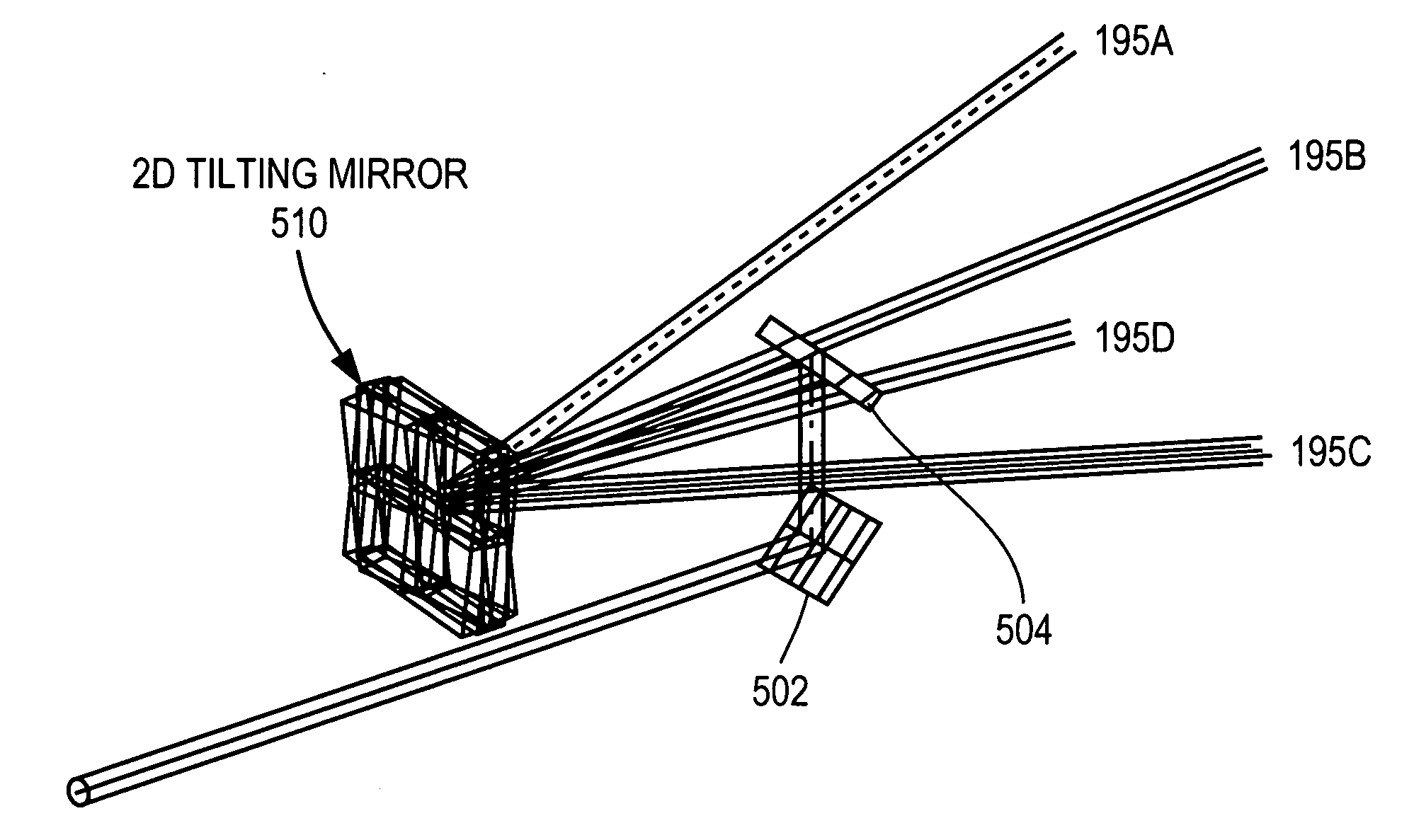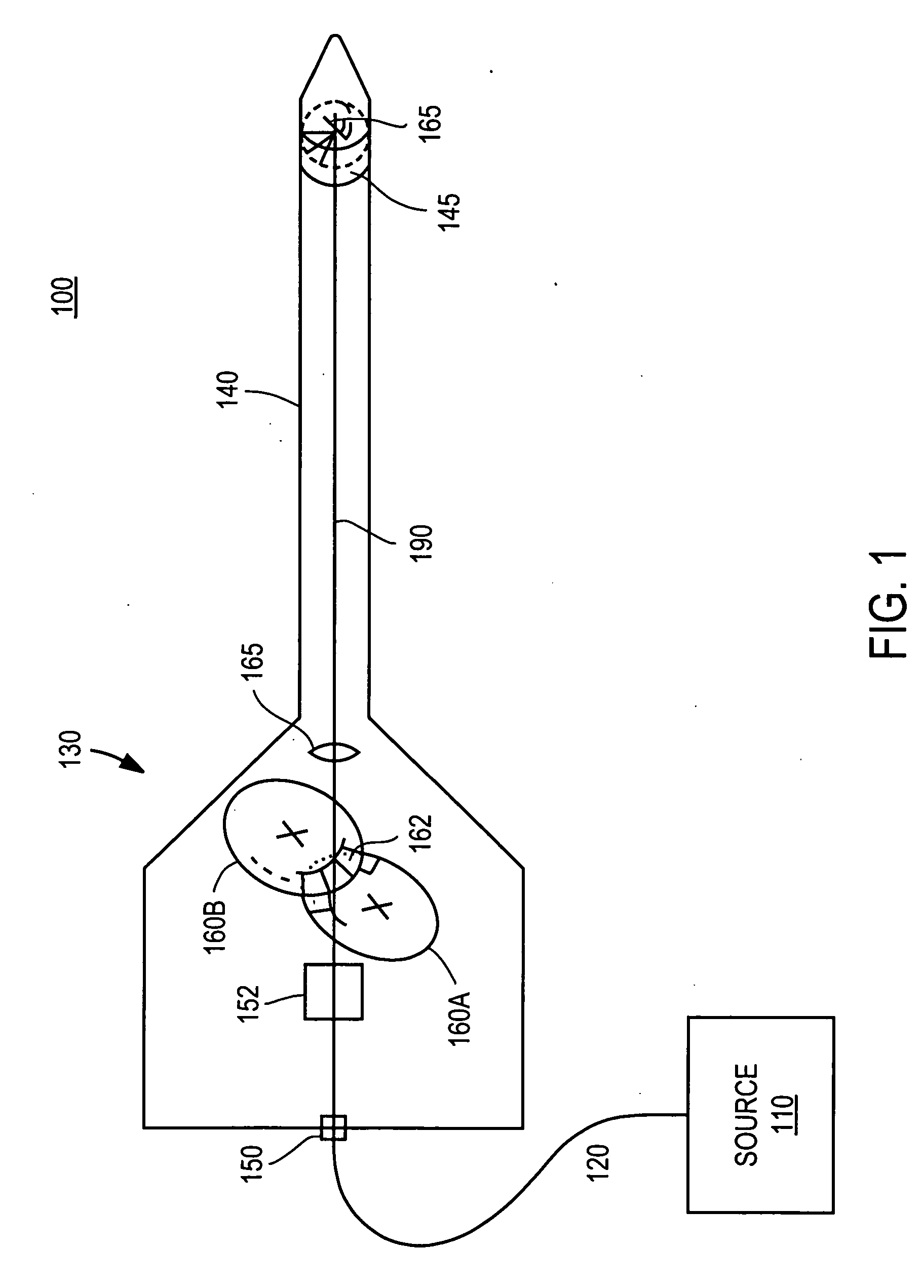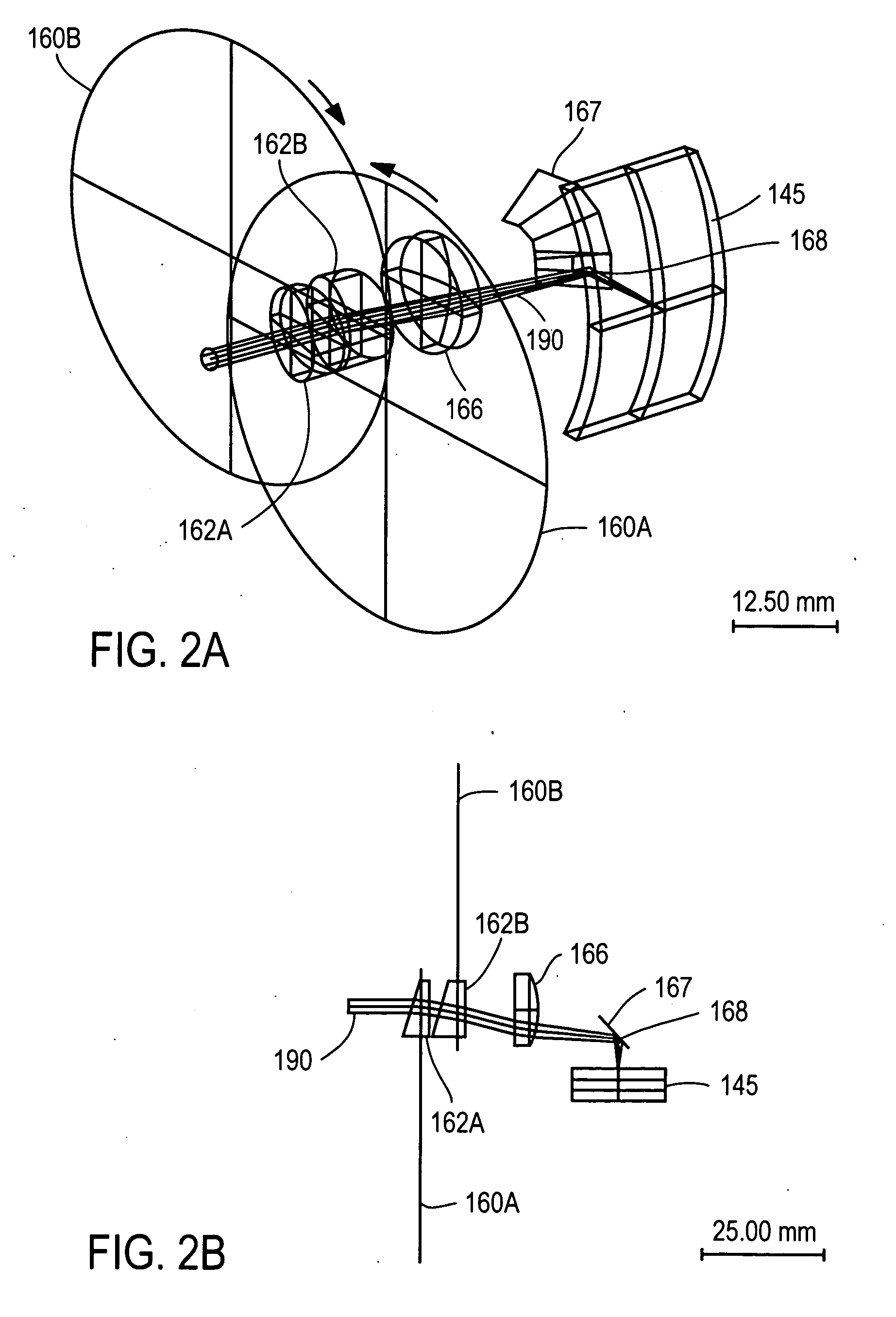Optically-induced treatment of internal tissue
a technology of internal tissue and optical induction, which is applied in the field of treatment and/or diagnostics of internal tissue, can solve the problems of waste heat dissipation, difficult access to internal tissue, and limited optical channels to target tissue, and achieve the effect of fast treatment times and high speed
- Summary
- Abstract
- Description
- Claims
- Application Information
AI Technical Summary
Benefits of technology
Problems solved by technology
Method used
Image
Examples
Embodiment Construction
[0030]FIG. 1 is a perspective view of a system 100 according to the present invention. The system 100 includes an optical source 110, an optical fiber 120 and a handpiece 130. The handpiece 130 includes a probe portion 140 used for insertion into the human body. The optical train within the handpiece 130 includes an input port 150 for the fiber, collimating optics 152, two counter-rotating disks 160A-B, and additional delivery optics 165. The probe 140 includes a transparent window 145 located in the vicinity of the probe's tip. In this example, the window 145 is located on the cylindrical side of the probe 140.
[0031] The system 100 operates as follows. The optical source 110, for example a pulsed laser, generates an optical beam that is delivered to the handpiece 130 via the fiber 120. The optical beam enters the handpiece at input port 150 and is collimated by optics 152 (e.g., a collimating lens). The counter-rotating disks 160 shown in FIGS. 2A-2C each include many facets 162 a...
PUM
 Login to View More
Login to View More Abstract
Description
Claims
Application Information
 Login to View More
Login to View More - R&D
- Intellectual Property
- Life Sciences
- Materials
- Tech Scout
- Unparalleled Data Quality
- Higher Quality Content
- 60% Fewer Hallucinations
Browse by: Latest US Patents, China's latest patents, Technical Efficacy Thesaurus, Application Domain, Technology Topic, Popular Technical Reports.
© 2025 PatSnap. All rights reserved.Legal|Privacy policy|Modern Slavery Act Transparency Statement|Sitemap|About US| Contact US: help@patsnap.com



